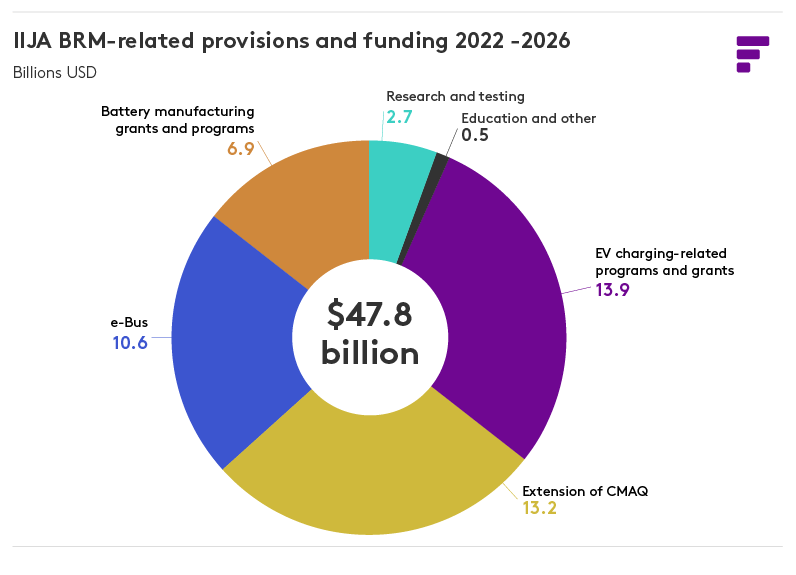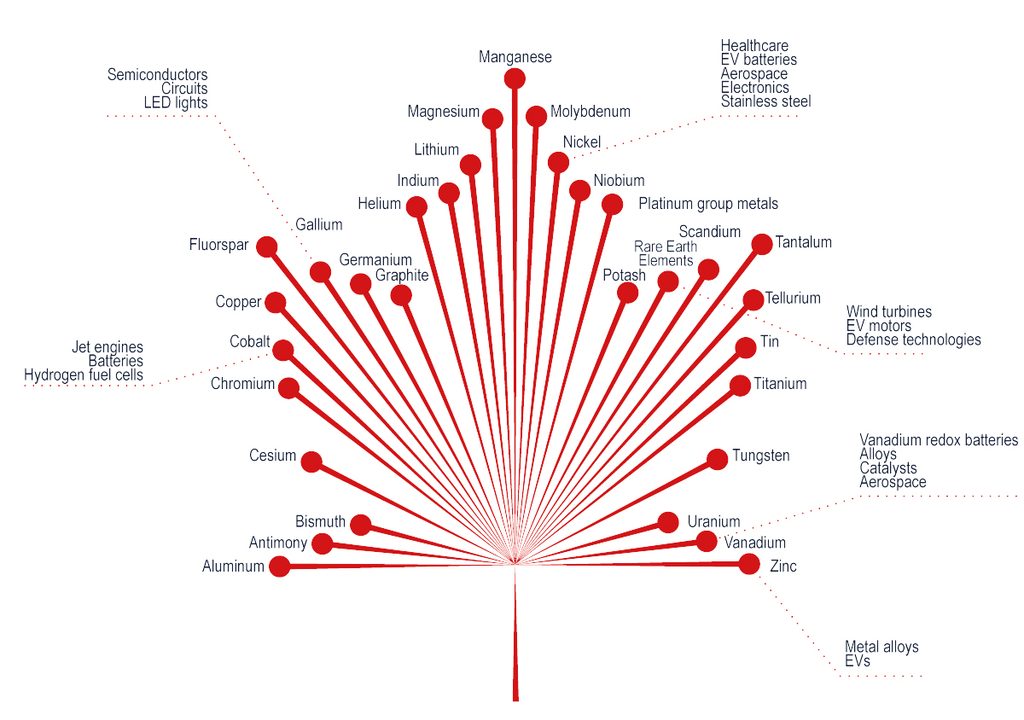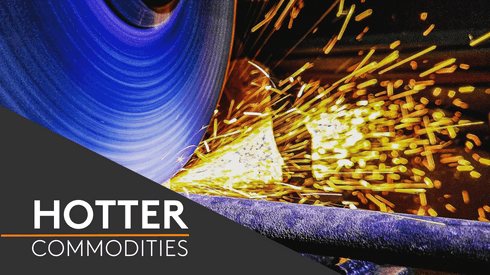Recently passed US, Canadian and EU policies and laws aim to support local economies, secure their battery raw material (BRM) supply chains and accelerate the transition away from fossil fuels into clean energy. The objective of these policies and laws are noble and have direct benefits to the industry. However, in the near term, they’ve created additional uncertainty and obstacles for battery material producers, car manufacturers and other OEMs in the race to a future where electric vehicles (EVs) replace internal combustion engines (ICEs).
The policies and laws establish requirements for domestic and friendly partner supply chains, aggressive targets for the phase-out of ICE vehicle sales and government funding and incentives that change the traditional competitive landscape. The stakes couldn’t be higher – failure to overcome these challenges and successfully make this transition is an existential threat to today’s ICE manufacturers and suppliers.
Find out how Fastmarkets can guide you in a new generation of energy markets
The four fundamental keys policies and laws include:
- The US Infrastructure Investment and Jobs Act (IIJA)
- The US Inflation Reduction Act (IRA)
- The EU’s commitment to phase out internal combustion engines
- The Canadian Critical Minerals Strategy.
What is the Infrastructure Investment and Jobs Act (IIJA)?
The Infrastructure Investment and Jobs Act (IIJA) was signed into law in November 2021. The $1.2 trillion package is aimed at creating millions of jobs, while addressing climate change and grid safety. Most of the BRM-related spending is targeted to ensure the availability and maintenance of EV charging infrastructure. A $13.2bn extension of the Congestion Mitigation and Air Quality Improvement (CMAQ) program has been put in place to include charging and medium and heavy-duty vehicles (MDHD). A $6.4bn Carbon Reduction Program, and a $7.5bn investment in EV charging stations with National Electric Vehicle Formula (NEVI) Program and charging and infrastructure grants has also been given the green light.
In October 2022, the US Department of Energy announced the first 20 companies to be awarded $2.8bn funded by the IIJA to expand domestic manufacturing, materials and components for EV batteries and energy storage systems (ESS). The companies will build or expand facilities to extract and process lithium, graphite and other battery materials; manufacture components and research and test new approaches, including manufacturing components from recycled materials. The largest sum ($481m) was awarded to Ascend Elements for its two projects: $316m to establish a facility for low-cost precursor cathode materials sourced partly through recycling and $164m to plan, design and construct a cathode active materials (CAM) plant.

IIJA may alleviate ‘range anxiety’
A third of the funding for the IIJA is aimed at adding 500,000 charging ports to the nationwide network which currently consists of 56,000 charging stations and 148,000 charging ports. The substantial increase of availability of chargers goes some way to alleviate one of primary obstacles for EV adoption – range anxiety. It also provides greater flexibility in battery chemistry choices as a more robust charging infrastructure can support smaller battery packs.
At the same time, the added demand for electric vehicles will put a strain on the already tight BRM market, thus further increasing the competition for sourcing of raw materials. The price of lithium carbonate, for example, has increased 755% since January 2021 and, recently, mining companies are switching from fixed-priced deals to pricing that reflects the supply and demand of the market.
Inflation Reduction Act (IRA) and incentives for EVs
According to Fastmarkets analysis, The IRA provides more than $80bn funding in battery related investments (for example, tax credits for the purchase of EVs for individuals and $30bn of funding for manufacturing production credit for battery cells). Almost all incentives are aimed at manufacturing and EV consumer markets, although they stipulate raw materials must originate or be refined in the US or by one of its free trade partners (FTP) in increasing percentages (by value) to 2032.
IRA presents challenge for battery material origin traceability
While the IRA was generally celebrated by the public as a way to decrease the price of electric vehicles while also aiding the economy and elevating environmental concerns, automakers were less than enthusiastic. Many worried that it will be difficult to meet the raw materials origin requirements for the multiple tax incentives, loans, and grants. In addition, the IRA stipulates that after 2023, in order to be eligible for government funding, no battery component can originate from a “foreign entity of concern” (China is on that list), which further disrupts OEM’s supply chains and adds pressure on costs.
From the other side of the ocean, European leaders have expressed concern about the competitive disadvantage that the region is facing because of the IRA. The EU does not have free trade agreements with the US for battery materials, which will hinder access to the American market and limit the attraction of capital investments in European companies and projects. For example, the US and its FTP will account for 46% of the world’s lithium production, while the European Union will account for only 3%.
Some companies were quick to take advantage of the opportunities which the IRA offers. For example, Volkswagen (VW) recently announced that it is looking for a location of its new battery factory in North America while it postpones the decision on its Eastern European factory. In order to stay competitive, many other companies will be pressured to follow suit and to move part of their production in North America with an added time delay on earnings and additional expenses.
But even with those moves, companies without EV production capacity will face two hurdles: further investment when EV costs are already going to be a challenge for large scale market adoption and delays may cause hard-to-reverse market share losses between now and when that production capacity is fully online.
The EU fossil fuel car phaseout
All EU legislature branches, together with the private sector, have reached an agreement which requires automakers to achieve a 100% cut in CO2 emissions by 2035. The deal will effectively prohibit the sale of new cars and vans powered by fossil fuels in the bloc after 2035. Five of the 27 EU countries (Bulgaria, Italy, Portugal, Romania and Slovakia) asked for an extension of the fossil fuel phaseout to 2040.
Phaseout comes at a ‘challenging’ geopolitical and economic crossroads
While noble, the ICE phaseout comes during a challenging geopolitical and economic climate. The Russian war in Ukraine and the subsequent disruption of gas supply has created an energy crisis in Europe. “If you have the option of building a battery plant in Europe, where electricity costs 15 cents per kilowatt hour, but you can get it in China or America for 2-3 cents, we are not in a position under stock corporation law to say we will do it here out of solidarity,” said Thomas Schaefer COO VW. At the same time, the IRA, as it stands today, has effectively made it close to impossible for vehicles and components produced in Europe to compete in the US market.
The ICE phaseout in the context of the energy crisis, the competitive edge of the US, the limited supply of locally sourced lithium in Europe, combined with the social opposition to mining in the region, will make it difficult for the region to diversify its supply chains and become independent from other regions. At the same time, costs are piling up for all participants in the EV value chain in Europe, making it more and more difficult to meet the 2035 goals.
The Canadian Critical Minerals Strategy aims to make Canada leading minerals supplier
Canada’s Critical Minerals Strategy, backed by up to $3.8bn in federal funding, is aimed to set Canada on a path of becoming premier leading supplier for critical minerals and “expanding the mining sector, moving things forward expeditiously” (Hon. Jonathan Wilkinson, Minister of Natural Resources). Funding for the strategy includes:
- $701 CAD million in research, innovation and exploration funding in addition to 30% critical minerals exploration tax credit
- $1.542 CAD billion for accelerating project development
- $1.5 CAD billion for infrastructure development for critical mineral supply chains, with a focus on priority deposits
- $70 CAD million for global partnerships to promote Canadian mining leadership

What impact will the Critical Minerals Strategy have?
The Canadian Critical Minerals Strategy further demonstrates that the race to develop regional supply is well and truly underway. Compared with Europe, Canada has an abundance of battery materials, including cobalt, graphite, lithium, and nickel. The country also is a free trade partner to the US and has formalized bilateral cooperation agreements with the EU and Japan. All of these position Canada as a BRM mining and refining hub of the West and a likely global leader in battery pack production and the EV market.
Prior to the announcement of the strategy, the Canadian government has ordered three Chinese companies to divest their investments in Canadian critical minerals, citing national security – an example of localization. Shortly after, E3 Lithium received $27m CAD ($20.2m USD) from Canada’s Strategic Innovation Fund to support the company’s resource and technology development – from drilling to downstream lithium hydroxide production. Since 2019, there have been more than $7bn CAD in announced investments from companies in the country. The competition to invest will intensify in coming years, making it more difficult and costly to secure participation in the Canadian BRM market.
What does this all mean?
Each of these laws and policies highlight how governments are influencing emerging regional supply chains; both in catalyzing the EV revolution and their respective economic and environmental benefits.
The effects of these initiatives are already being felt but the ultimate impact is yet to be realized. Local supply and demand balances will fluctuate, critical commodity prices will remain volatile, geopolitics will create new alliances and strain others and the flow of capital from governments will change the competitive landscape.
Fastmarkets NewGen will continue to guide BRM producers, car manufacturers and OEMs through this uncertainty with insights, price data and forecasts to chart a successful path to realize the promise of the EV transformation.
Navigate volatility in the battery materials and EV market by watching our webinar






